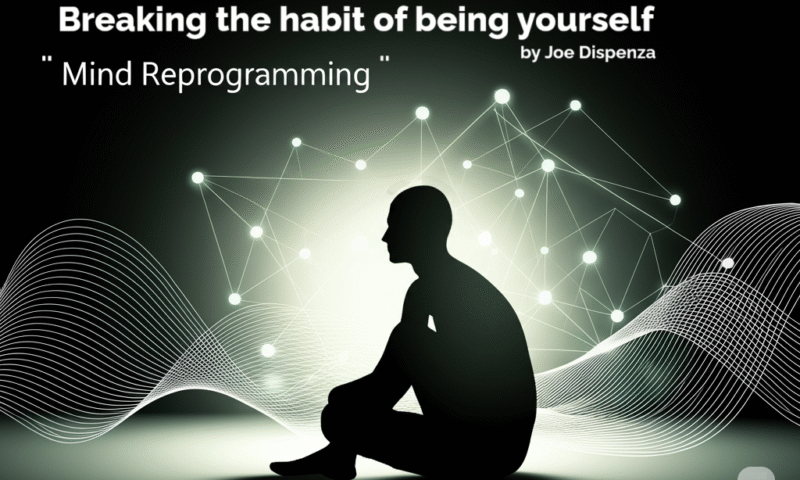Introduction
Power of Persuasion starts here: imagine having the ability to guide decisions, change minds, and foster cooperation simply by choosing the right words and methods. Have you ever felt stuck trying to convince someone—perhaps a colleague, family member, or community—of your point of view, only to see your efforts fall flat?
In this article, you will discover exactly what persuasion entails, break it down into clear components, and learn practical steps that you can follow immediately.
Along the way, you will journey through multiple detailed, true-to-life scenarios that unfold like gripping narratives, helping you witness how subtle shifts in language, behavior, and strategy create powerful impact.
By the end, you will not only understand the essence of persuasion but also feel equipped to apply it ethically, respectfully, and effectively—whether you’re proposing a new idea at work, encouraging positive habits in your community, or negotiating delicate matters at home.
Table of contents
1. Definition and Components of Persuasion
The first step to enhancing your influence is to grasp what persuasion truly means and what elements shape it.
1.1 What Is Persuasion?
Persuasion can be described as the art of influencing thoughts, feelings, or actions of others through communication. Rather than relying on force or coercion, persuasive individuals present arguments and messages that resonate, align with values, and motivate voluntary agreement. When executed properly, persuasion leads to genuine buy-in and sustainable change—because people feel they arrived at conclusions independently, even as you guide them toward a desired outcome.
- Ethical Foundation: Persuasion hinges on authenticity and respect. If your message conflicts with shared values or relies on manipulation, it will ultimately backfire.
- Goal Orientation: Unlike casual conversation, persuasive communication has an intended outcome—whether to prompt action (donating to charity), shift beliefs (promoting a healthy habit), or facilitate cooperation (team alignment on a project).
1.2 Core Components of Effective Persuasion
Break persuasion down into three interrelated layers that work together seamlessly. Each layer represents a question your message must answer for its audience: Why should I listen? What do I believe? How should I act?
- Credibility (Ethos):
- Trustworthy Persona: You establish credibility when your audience perceives you as knowledgeable, honest, and aligned with their interests.
- Expertise and Integrity: Drawing on relevant experience—such as professional roles, educational background, or real-life successes—reinforces trust. At the same time, honesty about limitations fosters authenticity.
- Logical Appeal (Logos):
- Clear Reasoning: Presenting evidence, data, or factual information helps audiences follow a logical path. When facts and rationale align seamlessly, people tend to internalize the message rather than dismiss it.
- Structured Arguments: Using bullet points, numbered lists, or well-organized sections helps the listener follow your train of thought. Breaking complex ideas into digestible steps reduces mental friction.
- Emotional Connection (Pathos):
- Relatable Stories: Narratives tap into empathy. When you tell a story that mirrors your audience’s challenges, hopes, or dreams, you create an emotional anchor for your argument.
- Shared Values: Referring to communal ideals—such as justice, compassion, or family—evokes emotions that transcend mere logic.
No single component works in isolation. Instead, your message becomes compelling when you weave trust, reason, and emotion together—building a sturdy bridge between your intention and the listener’s worldview.
2. Practical Steps to Improve Persuasion
Understanding theory alone will not shift outcomes. You need actionable steps to start influencing effectively from today. Below, find six concrete phases, each breaking down what to do, how to do it, and why it matters.
Note: In all steps, keep intentions ethical and aligned with shared values. Persuasion becomes manipulative when it deviates from mutual benefit.
2.1 Step 1: Research and Preparation
Goal: Enter conversations fully informed, anticipating concerns and values of your audience.
- Identify Audience Needs: Ask yourself: What matters most to them? For instance, if you need to convince a local committee to fund a literacy program, learn about their budget constraints, prior projects, and mission statements.
- Gather Credible Evidence: Collect data from trusted sources (e.g., reports by reputable non‐profits or government agencies). If you cite a statistic—like “73% of youth in our region lack access to reading materials”—confirm it is accurate and up to date.
- Outline Key Messages: Draft a rough structure: introduction, main points, supporting evidence, and call to action. Listing these items in bullet points helps you stay focused.
Why This Works: When you demonstrate knowledge of your audience’s context and back your claims with solid evidence, you lay the foundation for credibility (ethos) and logical appeal (logos).
2.2 Step 2: Crafting a Resonant Message
Goal: Develop a message that speaks to both logic and emotion.
- Start with a Strong Hook: Use a compelling question or a short anecdote. For example: “Have you ever wondered why some students lose motivation by mid‐term, even though they desperately want to succeed?”
- Use Clear, Simple Language: Avoid jargon or overly technical terms. Instead of “cognitive retention,” say “long‐lasting memory.” This invites universal understanding.
- Incorporate Stories: Share a brief tale—perhaps of a young student who overcame illiteracy through a community library. Make it vivid: “When Amina first held a book, her eyes filled with wonder. Within months, she read her first letter to her mother.”
- Address Objections Proactively: If you anticipate the audience thinking, “This will cost too much,” respond: “While initial investment is $5,000, local partnerships can reduce that by 40%, elevating sustainability.”
Why This Works: You combine emotional appeal (pathos) through stories, logical appeal (logos) through clear facts and concise language, and anticipation of concerns shows you respect the audience’s viewpoint.
2.3 Step 3: Establishing Trust and Credibility
Goal: Ensure your audience views you as reliable, knowledgeable, and aligned with shared values.
- Share Relevant Credentials Sparingly: Instead of listing every qualification, highlight one or two that directly relate to this topic: “I have spent five years working in community education, during which time I collaborated with local leaders on literacy projects.”
- Use Neutral Third‐Party References: Cite studies from recognized institutions—e.g., a 2020 study by Algeria’s Ministry of Education showing improved retention rates when after‐school programs incorporate home visits.
- Acknowledge Limits: Saying something like, “I do not have all the answers, but through collaboration, we can find solutions that fit our community” enhances authenticity.
Why This Works: You appear both knowledgeable and humble. Audiences tend to trust speakers who are upfront about limitations and who demonstrate genuine concern for communal well‐being.
2.4 Step 4: Engaging Delivery
Goal: Present your message in a manner that feels genuine, confident, and approachable.
- Mind Your Tone and Pace: Speak at a moderate speed. Use transitional words—such as “therefore,” “in addition,” and “however”—to guide listeners smoothly from one idea to the next.
- Maintain Eye Contact (if in person) or Direct Address (if virtual): Looking at listeners’ eyes (or camera) fosters connection.
- Use Body Language Wisely: Lean slightly forward when making key points, and pause briefly after asking a rhetorical question to let it sink in.
- Invite Interaction: Encourage questions: “What concerns do you have about implementing this idea?” or “Does anyone have a different perspective to share?”
Why This Works: Engaging delivery underscores your credibility (ethos) and draws the audience into a two‐way dialogue—making them feel valued rather than talked at.
2.5 Step 5: Active Listening and Adaptation
Goal: Show the audience that you truly hear them, then adjust your message or approach accordingly.
- Paraphrase Audience Input: If someone raises a concern—_“I’m worried about ongoing costs”—_respond with, “You’re concerned that the program might become financially unsustainable over time.”
- Ask Clarifying Questions: Use phrases such as, “Could you share an example of where similar efforts have struggled?” This helps you pinpoint their real reservations.
- Adapt on the Fly: If you discover new objections, modify your approach: perhaps shift from focusing on financial benefits to long‐term social impact if that resonates more.
Why This Works: People are far more likely to support ideas when they feel heard. By actively listening and adapting, you foster goodwill and open minds.
2.6 Step 6: Clear, Ethical Call to Action
Goal: Conclude by guiding your audience toward a simple, concrete next step with integrity.
- Specify Next Steps: Instead of a vague appeal—_“Let’s work together”—_say, “Please sign up for a short committee meeting next Tuesday at 3:00 PM, where we will allocate preliminary resources.”
- Emphasize Mutual Benefit: Frame your request around shared goals: “By joining forces, we can ensure that over 200 children in our community gain essential reading skills by year’s end.”
- Provide Resources for Follow‐Up: Offer handouts, links to reputable studies, or your contact information so interested parties can explore further.
Why This Works: People need clarity on what to do next. An ethical call to action helps them act swiftly and confidently, minimizing confusion.
3. Real‐Life Examples of Persuasion in Action
Here are four detailed examples—each unfolds like a short film—demonstrating how the power of persuasion plays out in practice. For each, you will see how theory and steps above interconnect seamlessly.
Example 1: Empowering a Community Health Initiative
3.1.1 Setting the Scene
In early 2024, a rural village in northern Algeria faced a severe shortage of clean water pumps. Repeated contamination led to frequent waterborne illnesses among children. Dr. Samira, a community health officer, recognized that villagers distrusted external aid efforts due to previous failed projects. To address this, she embarked on a persuasive campaign to convince the local council and residents to support a new initiative: installing solar‐powered water pumps, which would reduce operational costs and environmental impact.
3.1.2 Research and Preparation (Step 1)
- Mapping Stakeholders: Dr. Samira identified key community influencers—two village elders, the imam, and a women’s cooperative leader named Fatima. She met them informally to learn their concerns: limited budgets, fear of technology failure, and lingering suspicion of outside health workers.
- Gathering Data: She sourced data from Algeria’s Ministry of Health showing that solar pumps reduced maintenance costs by 60% over five years, compared to diesel pumps. She also collected testimonials from a neighboring village where such a system worked successfully.
- Structuring the Proposal: She outlined three main points: (1) Cost‐effectiveness, (2) Long‐term health benefits, and (3) Community involvement in maintenance.
3.1.3 Crafting the Message (Step 2)
At the village’s Friday gathering, Dr. Samira began with this hook:
“Imagine years from now, our children drinking water that never makes them sick—safe water flowing from a pump powered by sunlight.”
- Story: She recounted the experience of Amir, a young boy from a nearby village who missed school for weeks due to repeated stomach infections.
- Evidence and Logic: She explained: “With solar pumps, we spend 10,000 DZD on initial setup, but in five years, we save 40,000 DZD on fuel and repairs.”
- Addressing Objections: When villagers asked, “What if panels break?” she replied, “We will train local technicians, including women from the cooperative, to perform routine checks—just three hours per week is enough.”
3.1.4 Establishing Credibility (Step 3)
- Personal Background: Dr. Samira mentioned her seven years working in public health across rural communities.
- Third‐Party Support: She shared a letter from a reputable NGO—DesertAid Algeria—pledging to supply spare parts for two years at no cost.
- Acknowledging Limits: She said, “I cannot promise instant results, but if we work together and maintain these pumps diligently, our village can become a model for neighboring areas.”
3.1.5 Engaging Delivery (Step 4)
- Tone & Pace: Dr. Samira spoke at a measured pace, using phrases like “therefore” and “moreover” to guide listeners.
- Interaction: She invited Fatima to share how women could manage maintenance schedules. This inclusion demonstrated respect for community roles.
- Nonverbal Cues: She stood amidst the villagers rather than behind a table, making eye contact and pausing after each question to let it resonate.
3.1.6 Active Listening (Step 5)
- Paraphrasing: When an elder expressed, “We fear outside funds might dry up,” she responded, “You’re concerned the project will collapse if external sponsors withdraw—so let’s discuss how to generate local revenue to sustain it.”
- Adaptation: Based on feedback, she proposed a small community garden irrigated by excess water, with profits used to purchase spare parts annually.
3.1.7 Call to Action (Step 6)
- Clear Next Step: She concluded: “Let us meet again next Monday at 10:00 AM in the community hall. We will form a volunteer maintenance committee of at least six members, including men and women. If you sign this sheet today, you commit to attending.”
- Mutual Benefit: She emphasized: “By ensuring safe water, we reduce medical costs and produce healthier children ready for school.”
Outcome: Within two months, the council allocated funds; by July 2024, the solar pumps operated smoothly. Village health improved, and the women’s cooperative used profits to buy additional seeds for the garden—demonstrating successful, sustainable persuasion.
Example 2: Convincing Parents to Embrace Digital Learning
3.2.1 Setting the Scene
In October 2023, a middle school in Oran introduced an e‐learning platform to enhance student engagement. Many parents, however, feared that excessive screen time would distract their children from faith and family responsibilities. The principal, Mr. Karim, had to persuade them to support the digital initiative without compromising values.
3.2.2 Research and Preparation (Step 1)
- Understanding Concerns: Mr. Karim held small focus groups with parents, discovering two main worries: (1) Lack of digital literacy among older caregivers, and (2) Fear of inappropriate online content.
- Collecting Evidence: He obtained statistics from UNESCO showing that schools with blended learning saw a 25% improvement in reading comprehension. He also consulted a national cybersecurity agency to learn best practices for safe online environments.
- Drafting the Proposal: He planned to demonstrate how the platform could be used under parental supervision, ensuring faith‐aligned content filters.
3.2.3 Crafting the Message (Step 2)
At a parents’ meeting, Mr. Karim opened with:
“What if our children could explore science and literature through guided, safe online lessons that complement their faith and moral values?”
- Story: He told of a local student, Sara, who struggled with math until she accessed video tutorials on the platform—then raised her grades from 45% to 80% within one semester.
- Evidence and Logic: He explained, “With proper filters, every lesson follows our national curriculum. Plus, we can schedule study hours so screen time never conflicts with prayer times.”
3.2.4 Establishing Credibility (Step 3)
- Credentials: Mr. Karim mentioned his ten years of experience as an educator and his collaboration with the Ministry of Education.
- Third‐Party Endorsement: He displayed a letter from Algerian Cybersecurity Authority certifying that the platform’s filters meet national standards.
- Admitting Limitations: He acknowledged, “At first, we may face glitches, but our IT committee includes both teachers and parent volunteers to address issues within 24 hours.”
3.2.5 Engaging Delivery (Step 4)
- Tone & Pace: He used a calm, reassuring tone, interspersing transitional phrases like “Furthermore” and “On the other hand.”
- Inviting Input: He paused frequently to ask, “What features concern you most, and how can we address them?”
- Body Language: He held up screenshots of secure login pages and educational interfaces, walking parents through each step.
3.2.6 Active Listening (Step 5)
- Paraphrasing: When a parent asked, “Will my daughter be distracted by social media?” he responded, “You worry that unrelated apps might compromise focus—so let me show you how we block those entirely.”
- Adapting Proposal: Following feedback, he arranged for weekly “Digital Literacy” workshops so parents could gain confidence navigating the platform.
3.2.7 Call to Action (Step 6)
- Next Steps: He invited parents to register for a workshop on November 1, 2023, at 4:00 PM. Parents could then create demo accounts with their children present.
- Mutual Benefit: He concluded, “By collaborating, we equip our children with essential skills for the future while preserving our values and faith.”
Outcome: By December 2023, over 85% of parents had completed the workshop. Student performance improved, and parents reported feeling more connected to their children’s learning process.
Example 3: Persuading a Colleague to Adopt a New Workflow
3.3.1 Setting the Scene
In March 2024, within a mid‐sized nonprofit based in Algiers, the communications team relied on email chains and scattered documents, leading to missed deadlines and duplication of efforts. Amina, the newly appointed communications lead, proposed implementing a centralized project management tool. Her colleague, Youssef, resisted, believing that new software would complicate tasks and add learning curves.
3.3.2 Research and Preparation (Step 1)
- Assessing Pain Points: Amina interviewed team members and found recurring frustrations: lost attachments, inconsistent versioning, and unclear task assignments.
- Collecting Data: She researched a free, secure platform endorsed by the United Nations Development Programme (UNDP), showing it could reduce administrative time by 30%.
- Outline for Proposal: She framed her pitch around three benefits: (1) Clear task assignment, (2) Document version control, and (3) Analytics to track progress.
3.3.3 Crafting the Message (Step 2)
In the weekly staff meeting, Amina began:
“How often have we missed deadlines because attachments got buried in emails? What if every file and update lived in one place?”
- Story: She shared how, in a Tunisian NGO, adopting similar software cut communication delays by half—benefiting both staff and beneficiaries.
- Evidence and Logic: She demonstrated real‐time task tracking: “With this tool, we can see exactly who completed what, when. This transparency saves us at least two hours per week per person.”
3.3.4 Establishing Credibility (Step 3)
- Experience: Amina noted her prior experience leading digital transformations in another organization.
- Third‐Party Validation: She referenced a 2022 UNDP report recommending specific platforms for NGOs.
- Admitting Drawbacks: She said, “Learning something new takes time, but the initial two‐hour training session will set us up for smoother collaboration.”
3.3.5 Engaging Delivery (Step 4)
- Demonstration: Instead of merely describing the tool, she opened it on a screen and invited Youssef to try assigning a mock task.
- Interactive Questions: She asked, “What challenges do you face right now that this could solve?” Youssef replied, “I spend too much time searching for files.” She then navigated to demonstrate a file search feature.
- Tone & Pace: She maintained an encouraging tone, saying, “don’t worry if you make mistakes—it’s easy to undo actions.”
3.3.6 Active Listening (Step 5)
- Paraphrasing: When Youssef expressed fear of missing emails if everything shifted, she responded, “You’re concerned that important notifications will slip through the cracks—let’s explore how the tool’s alert system can replicate email reminders.”
- Compromise: She proposed a trial period of one month. If after that month the team wasn’t more efficient, they could revert to the old system.
3.3.7 Call to Action (Step 6)
- Next Step: Amina asked everyone to sign up for the April 1, 2024 training at 9:00 AM. She offered to provide printed guides for those uncomfortable with digital formats.
- Mutual Benefit: She concluded, “By saving two hours each week, we devote more time to meaningful campaigns that help those in need—our true mission.”
Outcome: After the one‐month trial, team efficiency improved significantly. Youssef admitted that retrieving files took him seconds instead of minutes, and the whole team continued using the platform.
Example 4: Encouraging a Peer to Adopt Healthy Habits
3.4.1 Setting the Scene
In January 2025, college classmates Zara and Nadir supported each other academically. However, Nadir struggled with late‐night snacking and disrupted sleep, which affected his focus. Zara decided to persuade Nadir to adopt healthier habits—particularly a balanced evening routine incorporating light exercise and early rest—without coming across as bossy.
3.4.2 Research and Preparation (Step 1)
- Understanding Motivations: Zara knew Nadir valued academic success and faith—he often said that poor sleep harmed his concentration during prayer and study.
- Gathering Evidence: She found a peer-reviewed study from University of Cairo (2023) showing that students who slept eight hours nightly improved test scores by 15% on average. She also read a local wellness guide endorsed by the Ministry of Youth and Sports recommending simple evening stretches to aid sleep.
- Drafting the Approach: She decided to propose a joint commitment—both would practice light exercise together before prayer, and agree to lights‐out by 11:00 PM.
3.4.3 Crafting the Message (Step 2)
At sunset prayer one evening, Zara approached Nadir:
“Nadir, you’ve told me how fatigue affects your devotion and studies. What if we tried a brief 15‐minute stretching routine and a fixed bedtime? It could boost your energy and clarity.”
- Story: She recalled her cousin, Hassan, who struggled similarly until he adopted this routine—within two weeks, Hassan reported more alertness during lecture and felt spiritually refreshed.
- Evidence and Logic: She said, “According to the University of Cairo study, consistent sleep improved memorization by 20%. If we both commit for four weeks, we can measure improvements in our quiz scores.”
3.4.4 Establishing Credibility (Step 3)
- Personal Testimony: Zara admitted she used to stay up late but switched to early evenings six months prior, noticing improved focus.
- Third‐Party Reference: She mentioned the wellness guide from the Ministry of Youth and Sports that enumerated easy stretches approved by certified instructors.
- Acknowledging Limits: She added, “I understand that changing habits isn’t easy, but we can encourage each other and keep each other accountable.”
3.4.5 Engaging Delivery (Step 4)
- Friendly Tone: Zara used a warm, supportive tone, saying, “Let’s do this together; it will be fun.”
- Inviting Participation: She suggested starting with one simple stretch—“touch your toes while standing”—and practicing it right after prayer.
- Demonstration: She led by example, performing the stretch and encouraging Nadir to join.
3.4.6 Active Listening (Step 5)
- Paraphrasing: When Nadir said, “I’m worried I won’t stick to a schedule,” Zara responded, “You fear inconsistency—so let’s set reminders on our phones at 10:00 PM to begin winding down.”
- Adapting Plan: They agreed on a weekend “catch‐up” if either remained awake past 12:00 AM, to reaffirm their commitment rather than scold each other.
3.4.7 Call to Action (Step 6)
- Next Step: They agreed to start on January 10, 2025, after Fajr prayer—committing to lights‐out by 11:00 PM on weekdays and 12:00 AM on weekends.
- Mutual Benefit: Zara emphasized, “By supporting each other, we can improve our studies, our prayers, and ultimately our well‐being.”
Outcome: After four weeks, Nadir reported improved concentration in classes and felt more spiritually engaged during evening prayers. Their quiz averages rose by 12% for both.
4. Debunking Common Myths about Persuasion
Many people hold misconceptions that hinder their ability to persuade effectively. Below are three widely believed myths, followed by concise clarifications rooted in research and practice.
- Myth 1: Persuasion Requires Forceful Dominance
- Clarification: Contrary to this belief, the most lasting influence arises from co-creation and empathy rather than pressure. According to Robert Cialdini’s principles—specifically “Reciprocity” and “Liking”—people comply more readily when they feel understood and valued, not coerced.
- Myth 2: Logic Alone Suffices
- Clarification: While logical arguments (logos) are essential, ignoring emotion severely limits impact. Research by Petty and Cacioppo (1986) in the “Elaboration Likelihood Model” demonstrates that audiences process information both centrally (logic) and peripherally (emotion). When emotion is absent, messages often fail to resonate.
- Myth 3: Persuasion Is Inherently Manipulative
- Clarification: Ethical persuasion distinguishes itself by aiming for mutual benefit. It respects the autonomy of others and seeks alignment, not exploitation. As long as you remain transparent, factual, and considerate of shared values, persuasion is not only acceptable but beneficial for collective progress.
By discarding these myths, you free yourself to approach persuasive communication with confidence, clarity, and ethical integrity.
Conclusion
Mastering the power of persuasion is not about trickery—rather, it is about aligning clarity, empathy, and ethics to encourage individuals and groups to reach decisions that benefit everyone involved. By understanding the core components—credibility, logical appeal, and emotional connection—and following the six practical steps—research, message design, credibility building, engaging delivery, active listening, and an ethical call to action—you will sharpen your ability to guide effective change. The four comprehensive examples illustrate how these principles unfold in real settings: from a rural community seeking clean water to a classroom embracing digital learning, from a nonprofit team improving collaboration to friends fostering healthy habits.
As you step forward, recall these guiding questions:
- What does my audience truly care about?
- How can I balance facts with stories to resonate emotionally?
- Am I being transparent, honest, and respectful in my approach?
references
Warning: The provided links lead only to the specified content. Other areas of those sites may contain material that conflicts with some beliefs or ethics. Please view only the intended page.
- UNESCO: Digital Learning in Agriculture (March 2025) – insights on tech improving learning in Africa
https://www.unesco.org/en/articles/digital-learning-africa-bridging-gap-low-resource-contexts - Journal of Public Health: Smartphone Use & Sleep (June 2023), Elsheikh et al. – study linking bedtime phone use to sleep and academic issues
https://link.springer.com/article/10.1007/s10389-023-01964-8 - PMC: African University Students’ Sleep Quality – meta-analysis on sleep problems and academic performance
https://pmc.ncbi.nlm.nih.gov/articles/PMC10979362/ - Sleep Hygiene Practices Study (2025) – prevalence and effects among Egyptian medical students
https://sleep.biomedcentral.com/articles/10.1186/s41606-025-00125-y - Wikipedia: Sleep Deprivation in Higher Education – broad overview of student sleep deprivation impact
https://en.wikipedia.org/wiki/Sleep_deprivation_in_higher_education


















